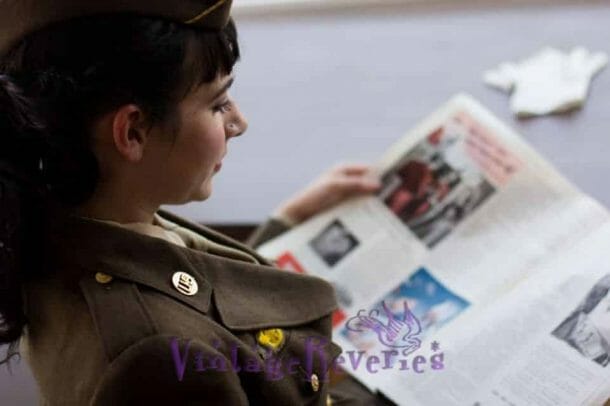
1920s mens and boys clothing ads: Knickerbockers, hats, trousers and more!

Step back in time to the roaring 1920s, an era of transformation, sophistication, and burgeoning consumerism. Fashion during this decade was not just about utility—it was a statement, reflective of cultural shifts, economic prosperity, and the advent of modern advertising. This article explores the rich tapestry of 1920s menswear and boy’s styles, as evidenced by historic adverts from the 1924 St. Louis Fashion Pageant, bringing you a closer look at the trends, styles, and influences shaping this pivotal era.
The 1920s were marked by a unique intersection of tradition and modernity. Men’s and boys’ fashion, as seen in these advertising snippets, tells the story of evolving tastes and the rise of ready-to-wear clothing. Here are a few highlights from the magazine ads and catalogs that give us a peek into the wardrobes of the time:
Knickerbockers: Functional and Fashionable
Knickerbockers—or “knickers”—were a wardrobe staple for boys and young men in the 1920s, a blend of old-world tradition and youthful energy. These trousers, which buckled or tied tightly just below the knees, were inspired by 19th-century European aristocrats and gained mass popularity during the early 20th century. Ads from the 1924 St. Louis Fashion Pageant show just how integral knickerbockers were to a boy’s wardrobe, offering them as ideal items for school or play. For adults, the look was more refined—a mix of country leisure and urban sophistication.
One ad highlights how local retailers were encouraged to “invest in their lines of men’s and boys’ clothing,” promoting knickerbockers alongside tailored trousers, creating a balance between comfort and elegance. While knickerbockers were gradually phased out for boys in the following decades, they played a key role in defining masculinity and youth culture in this era.
Hats for Every Occasion
The 1920s were a golden age for hats, as no respectable man left home without one. From fedoras to bowlers and flat caps, hats were one of the most important accessories for men and boys alike. Whether it was a statement of luxury or a practical choice, the hat underscored the wearer’s social status and sense of style.
Among the brands advertised at the 1924 St. Louis Fashion Pageant were Harris-Polk Hat Co, Carleton Clothes, and Apple Hat Manufacturing Company—the latter boasting a “famous adjustable feature” that made their hats versatile and durable for every customer. Many of these companies catered to not only local but also national audiences, riding the wave of mass manufacturing and improved nationwide distribution via railroads.
For boys, caps with short brims were especially popular for school and sports, maintaining a practical yet sharp appearance.
Trousers for Dad, Knickers for Lad
One striking advertisement by the Biltwell brand captures family fashion dynamics of the time: “Trousers for Dad, Knickers for Lad.” This slogan reflected the emphasis on generational dressing—fathers and sons were often seen as fashion pairs, embodying both the modern values of style and the lingering Victorian formality.
Men’s trousers of the 1920s moved away from ultra-slim cuts of prior decades. Instead, they leaned toward wider designs, with high waists and cuffed hems. These comfortable yet structured trousers signaled the gradual move towards practical, modern-day menswear. Lightweight fabrics, especially for warmer months, were celebrated in ads as innovations in men’s comfort.
Everyday Utility: A Peek into Accessories
The rise of accessories in men’s and boys’ fashion during the 1920s reflected the increasing integration of style into daily life. One ad details the Evr-Klean Seat Pads, marketed as revolutionary seat cushions to protect car upholstery, furniture, and clothing from wear and tear. Though not directly a fashion item, this speaks volumes about the growing crossover between functional innovation and sartorial care as society became more mobile and home-focused.
Masterpieces of Tailoring
The advertisements for H. Siegfried & Sons and their “Masterbilt” brand trousers catered toward a clientele described as those who “appreciate fine things.” This pitch targeted retailers, framing these trousers as premium offerings for discerning customers. This highlights a significant development of the 1920s: the shift from bespoke tailoring to high-end ready-to-wear clothing, which retained quality while offering convenience.
The 1920s saw brands increasingly positioning themselves for lifestyle aspirants, not just the elite. By marketing to the growing middle class, companies capitalized on a society eager to flaunt its modernity while cherishing timeless elegance.
The Legacy of 1920s Mens’ and Boys’ Fashion
Looking at these advertisements, it’s clear how much 1920s fashion for men and boys was shaped by broader social trends: youth culture, mobility, and the democratization of style. These ads from the St. Louis Fashion Pageant offer a window into a world where tailored trousers and playful knickers lived side by side, hats crowned every outfit, and even accessories like upholstery-protecting seat pads became part of a more integrated lifestyle of refinement.
The expansion of department stores, the growth of mail-order catalogs, and the development of targeted advertising campaigns all reflected—and drove—the demand for these stylish, practical outfits. Men’s and boys’ fashions during the 1920s aimed to balance tradition with the innovations of modern life, creating a dynamic and aspirational wardrobe.
So, whether it was the “quality guaranteed” trousers of Carleton Clothes or the adjustable hats of Apple Hat Manufacturing Company, these advertisements continue to remind us not only how the men and boys of the past dressed but also of the creative energy of advertising that helped establish timeless sartorial trends.
From timeless tailoring to whimsical iterations of youthful style, the 1920s laid the foundation for much of what fashion represents today: individuality, elegance, and an intricate dance between tradition and innovation. While many of the ad brands have faded into history, their impact on men’s and boys’ fashion is undeniable.





















You must be logged in to post a comment.